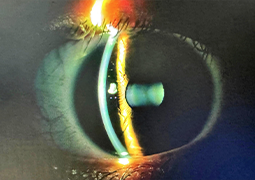Aim: The study aimed to explore the association between duration of smartphone usage and tear film parameters in adolescents through a hospital-based cross-sectional study.
Material and methods: A detailed history regarding smartphone usage was obtained, followed by tear film assessment for all the study participants. Tear meniscus height (TMH), Tear film break up time (TBUT), and Schirmer’s I test were done for all participants. Then they were classified into four groups, based on daily smartphone usage: < 2 hours/day, 2–4 hours/day, 4–6 hours/day, and > 6 hours/day.
Results: 123 smartphone users of the adolescent age group aged 10–19 years (mean age: 16.6 ±2.8 years) were included. The mean values of tear film parameters were as follows: TMH was 0.25 ±0.1 mm, Schirmer’s I was 17.7 ±9.2 mm, and TBUT was 10.5 ±5.7 seconds. Participants using smartphones for > 6 hours/day had a significantly higher prevalence of reduced TMH (< 0.25 mm) compared to those with lower usage durations (p < 0.0001). Similar trends were observed for Schirmer’s I and TBUT values, indicating a statistically significant association between prolonged smartphone use and tear film dysfunction (p < 0.0001). Notably, 72.7% of eyes in the > 6 hours/day group exhibited tear film dysfunction, significantly higher than in other groups.
Conclusion: Prolonged smartphone use adversely affects tear film stability and ocular surface health in adolescents. Awareness and appropriate measures to limit excessive screen time are essential to prevent tear film dysfunction and associated ocular discomfort.

